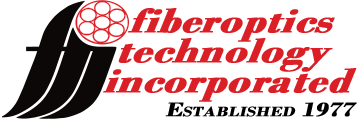FTI markets an extensive line of large core side and end emitting fiber for Industrial, architectural, commercial and landscaping applications.
The product adapts easily to outdoor applications. Made from synthetic materials, large core fiber is easy to handle and install, safe to use, dramatic in application, with good useful life.
You’ve probably seen this product type in high-end applications such as pools, fountains, or as accent lighting on the outside of buildings, strung on trees, lighted pathways for emergency routes, steps, refrigerated display cases, and a multitude of other applications.
See below for more information about Large Core Fiber. Or, view Technical Data Sheets on FTI’s line of Large Core Fiber and Accessories.
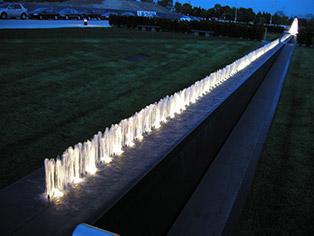
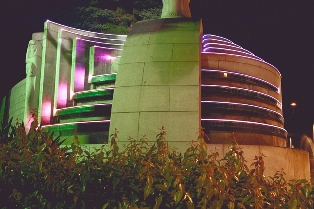
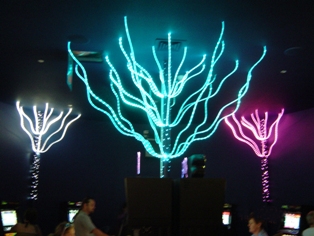
Large Core Side Glow Fiber – How it works:
Side glow fiber technology was first created in a manner similarly used to create Post-It® notes; researchers were looking for one thing, and discovered another. In this case, special chemistry, filling a Teflon tube, does a consistently bad job of transmitting light after it cures. The result is a solid “plastic” material which allows light to leak as it travels along the length of the material. Since the initial discovery, refinements in process and chemistry have been developed to manage this leaking phenomena making it more consistent over specified lengths. The result is a uniform glowing tube, similar in look to neon, with the potential for much more drama, less cost, greatly enhanced safety characteristics, and more flexibility in application. Current enhancements to the technology have evolved to optimize the product for use with LED, as well as HID (Metal Halide) sources.
The product is available in stranded or single diameter configurations. FTI only markets the large core version.
To emit as much of the energy as possible, typical arrangements use a reflective cap at one end, or another light source to maximize brightness.
The raw material is typically manufactured in finite lengths, various diameters, and sold by the spool. Therefore, you should be prepared to specify total required length, diameter and type (End or Side emitting).
Finally, knowing the light source to be used (LED/Metal Halide/Halogen) can help the application engineer make an optimal selection for your consideration.
Large Core End Lit Fiber – How it works:
Large core end lit fiber works in same manner as traditional optical fiber and offers some advantages over some traditional fiber optic designs.
There are physical limitations associated with traditional plastic and glass fibers; both must be made in small diameters to maintain flexibility. Therefore, these fibers are gathered in “bunches” to make larger working diameters. Because large core fibers use a single large core, they do a better job coupling light from large focal spot devices. (See illustration below)
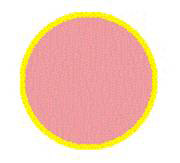
transmits light over the
area shown in pink
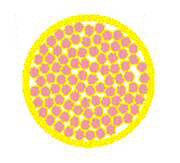
Large core fibers are flexible, but not as flexible as the same diameter made from small diameter fibers. When bent at sharp angles, large diameter fibers are less efficient. (They lose more light than their small diameter fiber counterparts).
Advantages over traditional fiber
In general, large core fiber optic lighting offers the following advantages:
- Can be field applied and installed by almost anyone. (no grinding or polishing is required; but the “cleave” should be uniform and perpendicular to the body of the fiber)
- More light is transmitted (within equivalent areas)
- Better color rendering – more blue light stays in the fiber for longer distances, making the light output look “whiter” and/or “brighter”
- Approximate the look of neon without the cost
- Higher temperature resistance than PMMA (Plastic acrylic) fiber (100C vs 70C)
- Available in side emitting type
- Reduced transmission of IR energy – less heat is transferred (No filters required)
Disadvantages
- More prone to deterioration from UV sources.
- Not as flexible.
- Exposure to water/moisture will corrode the core, making the fiber useless…special jacketing is required for outdoor use.
- Prone to chemical metamorphosis within the core; the material becomes less flexible over time…some manufacturer’s materials also darken or turn yellow.
FTI’s product line:
• Side Emitting Fiber Diameters from 3 mm – 19mm O.D.
• End Emitting Fiber Diameters from 4 mm – 21mm O.D.
• Available for LED or traditional light sources.
